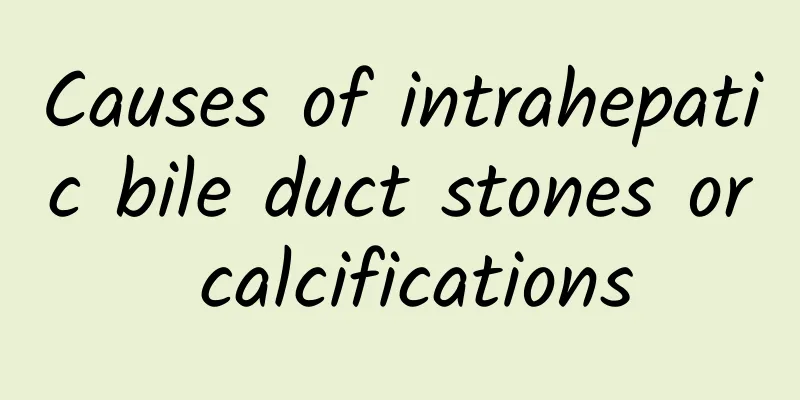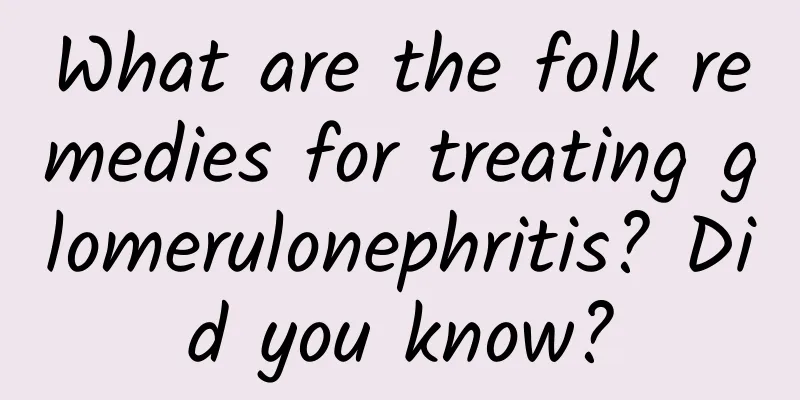Causes of intrahepatic bile duct stones or calcifications

|
Intrahepatic bile duct stones are a relatively common type of stones, which are extremely harmful to patients and can easily cause nausea, vomiting, and right rib pain. In more severe cases, symptoms of jaundice may appear, and it may even induce pancreatitis. There are many causes of intrahepatic bile duct stones or calcifications, which are related to the cause of the stones, and may also be caused by some parasites, or chronic inflammatory trauma. There are many causes of intrahepatic calcification, including: ① Intrahepatic bile duct stones are the most common factor; ② Chronic inflammation or trauma in the liver; ③ Parasitic infection; ④ Calcification of benign and malignant liver tumors and intrahepatic metastatic tumors; ⑤ Congenital development: intrahepatic calcification foci are formed in the fetus in the uterus, often accompanied by congenital malformations, with a detection rate of 0.057%. Treatment method: Intrahepatic calcification is a pathological change after certain liver lesions stabilize or heal, and it exists stably for a long time after formation. According to clinical observations, the lesions will neither regress on their own nor continue to develop. Because the lesions are mostly small, they generally do not cause obvious adverse effects on the body. Therefore, after excluding other liver lesions such as intrahepatic bile duct stones and a clear diagnosis, treatment is generally not required and regular B-ultrasound examinations and follow-up observations are sufficient. Only patients who are clearly diagnosed with intrahepatic bile duct stones require treatment when cholestasis or suppurative cholangitis occurs, and local resection of the lesion should be performed while treating the intrahepatic bile duct stones. It is particularly important to point out that in outpatient work, clinical physicians should improve their awareness, especially for simple intrahepatic calcification foci, and should pay attention to distinguishing them from intrahepatic bile duct stones to avoid misdiagnosis and mistreatment, which will bring unnecessary psychological and economic burdens to patients. Daily Diet 1. Eat more foods containing vitamin A, such as green vegetables, carrots, tomatoes, cabbage, etc. You should eat more fruits such as bananas and apples. 2. Use vegetable oil for cooking, and mainly stew, braise or steam the dishes. 3. Eat lean meat, chicken, fish, walnuts, black fungus, kelp, seaweed, etc. regularly. 4. Eat more foods that can promote bile secretion, relax the posterior biliary tract muscles, and have a choleretic effect, such as hawthorn, black plum, and corn silk (brew them into tea and drink slowly). You should eat breakfast and don't go on an empty stomach for too long. Exercise regularly to prevent constipation. 5. Avoid foods with high cholesterol, such as animal heart, liver, brain, intestines, egg yolk, preserved eggs, caviar and chocolate. 6. Avoid high-fat foods, such as fatty meat, lard, and fried foods. 7. Avoid excessive eating and drinking during holidays or gatherings with relatives and friends. Because overeating will promote the secretion of large amounts of bile. |
<<: Endoscopic nasobiliary drainage
>>: What happens if the bile duct is dilated after cholecystectomy?
Recommend
The hazards of infusion
With the continuous improvement of modernization,...
Do I need to supplement DHA during pregnancy?
DHA supplementation is necessary during pregnancy...
What medicine should I take for painful urination?
Painful urination is quite common in our daily li...
Is nephritis contagious?
There are many common diseases in life, and there...
Does a liver cyst need surgery?
Generally speaking, liver cysts are caused by con...
Causes and treatments of high uric acid levels
When it comes to uric acid, we are all familiar w...
Wild Dendrobium officinale 100,000 yuan per pound
Natural Huoshan Dendrobium officinale tastes swee...
What issues should we pay attention to when taking a bath with traditional Chinese medicine for health preservation?
Taking a bath is very good for your body and is a...
Causes of recurrent candida recurrence
Candida is a fungal disease caused by external or...
What should I do if my baby has a rash due to drug allergy?
The health of babies is very fragile, and they ca...
Traditional Medicinal Foot Bath
Foot bathing with traditional Chinese medicine is...
Normal bilirubin value
Bilirubin is one of the bile pigments and is the ...
The three most undesirable nap positions, how many of them do you make?
Taking a short nap during work has great benefits...
Pain down there during menstruation
During menstruation, you may feel a heaviness and...
When is the best time to do moxibustion?
Moxibustion has a long history. There are clear d...









